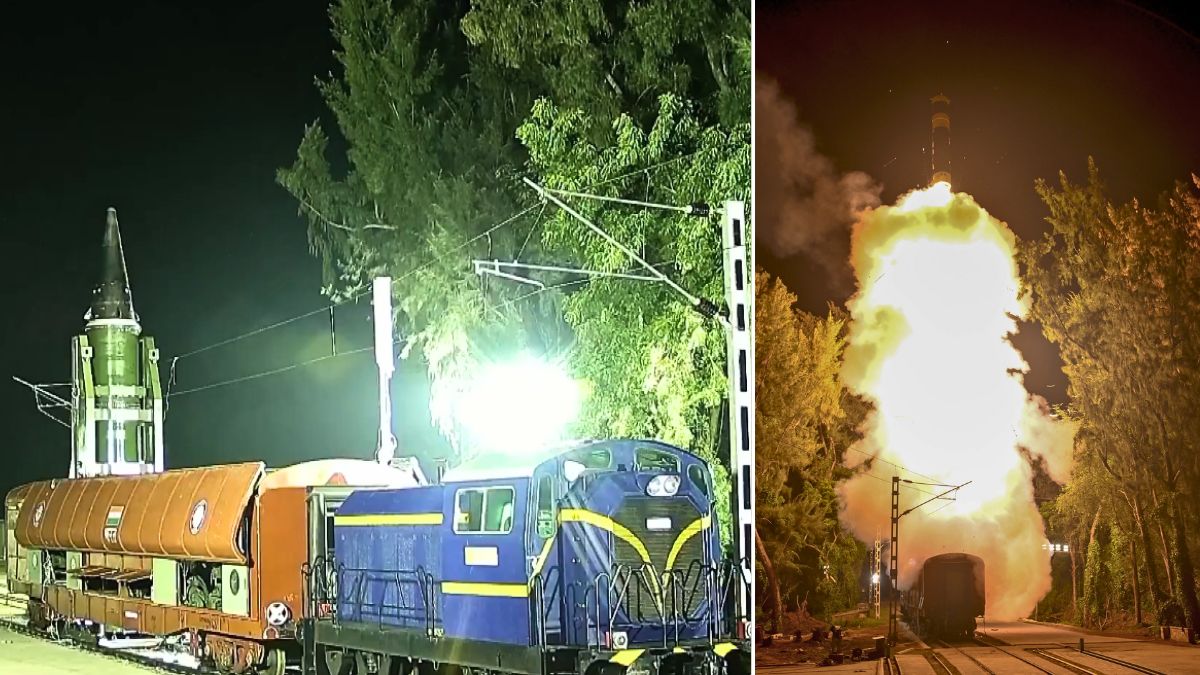India’s missile chapter ushered in a new lane as it conducted a first-of-its-kind missile launch. India on Thursday (September 25, 2025) successfully test-fired the nuclear-capable Agni Prime missile, Defence Minister Rajnath Singh announced on X, sharing visuals of the fiery lift-off.
This test marked a historic first, as the intermediate-range missile, with a range of 2,000 km, was launched from a rail-based mobile launcher pulled by an Indian Railways locomotive.
Agni Prime missile launch: Why this test is a game-changer?
Unlike routine missile trials, this was no ordinary test. With this capability, India has joined an elite group of nations including the United States, Russia, and China that have developed or operated railcar-based missile launch systems. This places India in a stronger position in the global missile power hierarchy.
“The first-of-its-kind launch carried out from specially designed Rail based Mobile Launcher, has the capability to move on Rail network without any pre-conditions that allows User to have a cross country mobility and launch within a short reaction time with reduced visibility,” Singh said.
The ability to launch Agni Prime from India’s 70,000 km-long railway network gives the armed forces unmatched mobility and flexibility. Key advantages include:
- Rapid deployment across vast terrain without dependence on roads.
- Shorter reaction time in case of conflict.
- Stealth operations by concealing missiles in railway tunnels to evade satellite detection.
Can rail mobility enhance India’s missile survivability?
Yes. Rail-based mobility not only widens the number of launch points but also enhances survivability during war. Missiles can be dispersed and stored at multiple rail-linked sites, making it harder for adversaries to target India’s arsenal. This is especially significant given recent cross-border conflicts where Indian military bases faced drone and missile attacks.
Rail-Based Launch System: What are its limitations?
Despite its advantages, the system has challenges which include launches being restricted to areas with railway tracks; chances of lower precision than that of silo-based systems; tracks remain vulnerable to sabotage in wartime, making security along the network a key concern.
The Soviet Union pioneered such technology in the 1980s with the RT-23 Molodets ICBMs, which, like Agni Prime, could carry nuclear warheads. Russia later worked on the Barguzin BZhRK system, though reports suggest the project has stalled. North Korea has claimed a similar capacity, but its reliability remains uncertain.
What Agni Prime’s test means for India’s missile power?
The successful rail-based test demonstrates India’s technological leap in missile deployment strategy. With canisteried, mobile launch systems, India now has a stronger deterrence posture, greater survivability of its nuclear arsenal, and enhanced ability to respond to enemy threats swiftly.
